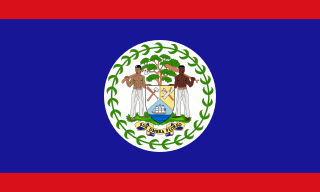
Belize is a country on the north-eastern coast of Central America. It is bordered by Mexico to the north, the Caribbean Sea to the east, and Guatemala to the west and south. It also shares a water boundary with Honduras to the southeast. It has an area of 22,970 square kilometres (8,867 sq mi) and a population of 441,471 (2022). Its mainland is about 290 km (180 mi) long and 110 km (68 mi) wide. It is the least populated and least densely populated country in Central America. Its population growth rate of 1.87% per year is the second-highest in the region and one of the highest in the Western Hemisphere. Its capital is Belmopan, and its largest city is the namesake city of Belize City. Belize is often thought of as a Caribbean country in Central America because it has a history similar to that of English-speaking Caribbean nations. Belize's institutions and official language reflect its history as a British colony.

Central America is a subregion of the Americas, frequently considered part of North America. Its political boundaries are defined as bordering Mexico to the north, Colombia to the south, the Caribbean Sea to the east, and the Pacific Ocean to the west. Central America usually consists of seven countries: Belize, Costa Rica, El Salvador, Guatemala, Honduras, Nicaragua, and Panama. Within Central America is the Mesoamerican biodiversity hotspot, which extends from northern Guatemala to central Panama. Due to the presence of several active geologic faults and the Central America Volcanic Arc, there is a high amount of seismic activity in the region, such as volcanic eruptions and earthquakes, which has resulted in death, injury, and property damage.
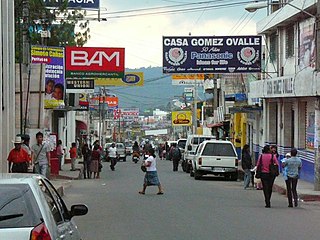
Chimaltenango is a city in Guatemala with a population of 96,985. It serves as both the capital of the department of Chimaltenango and the municipal seat for the surrounding municipality of the same name. Chimaltenango stands some 56 kilometres (35 mi) west of Guatemala City, on the Pan-American Highway. The municipal capital produces textiles and pottery.

Lázaro Chacón González was the acting President of Guatemala from 26 September 1926 to 18 December 1926 and President of Guatemala from 19 December 1926 to 2 January 1931.
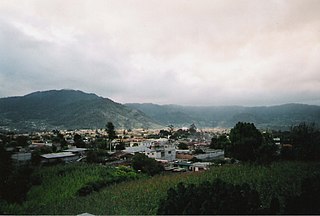
San Marcos (elevation: 7,868 feet is a city and municipality in Guatemala. It is the capital of the department of San Marcos. The municipality has a population of 47,063.
Amatitlán is a town, with a population of 98,176, and a municipality in the Guatemala department of Guatemala.
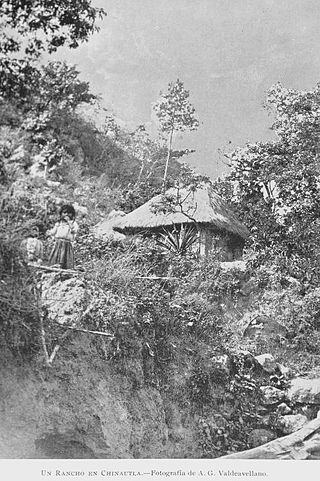
Chinautla is a city and municipality in the Guatemala department of Guatemala. The city has a population of 104,972 making it the fourteenth largest city in the country and the seventh largest in the Guatemala Department.

Mixco is a city and municipality in the Guatemala department of Guatemala. It is next to the main Guatemala City municipality and has become part of the Guatemala City Metropolitan Area. Most of Mixco is separated from the City by canyons, for which a multitude of bridges have been created. It is the second largest city in Guatemala after Guatemala City, with a population of 475,777. Ciudad San Cristóbal is located within Mixco.

Ocós is a municipality in the San Marcos Department of Guatemala. It is situated on the Pacific Ocean coast, very close to the border with Mexico at 4 m (13 ft) altitude and two big rivers: the Suchiate and the Naranjo rivers. On 23 January 2014, it lost about 2/3 of its territory when La Blanca was named the thirtieth San Marcos Department municipality.
Río Blanco is a mountainous municipality in the San Marcos department of Guatemala at 2650 altitude. Mam and Spanish are spoken there.
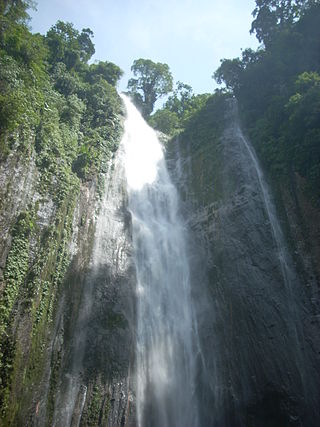
San Pablo is a town and municipality in the San Marcos department of Guatemala.

Ayutla is a municipality in the San Marcos Department of Guatemala. It is situated along the Suchiate River natural border with Mexico in the southern part of the department. The municipality center is Ciudad Tecún Umán. There is a combined road and rail bridge known as Puente Rodolfo Robles linking Ayutla to Ciudad Hidalgo in Chiapas, Mexico.
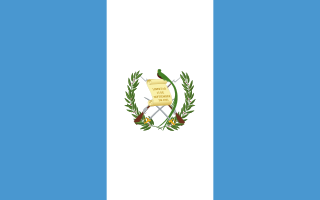
The following outline is provided as an overview of and topical guide to Guatemala:

Guatemala, officially the Republic of Guatemala, is a country in Central America. It is bordered to the north and west by Mexico, to the northeast by Belize, to the east by Honduras, and to the southeast by El Salvador. It is touched to the south by the Pacific Ocean and to the northeast by the Gulf of Honduras. With an estimated population of around 17.6 million, Guatemala is the most populous country in Central America, the 4th most populous country in North America and the 11th most populous country in the Americas. It is a representative democracy with its capital and largest city being Nueva Guatemala de la Asunción, also known as Guatemala City, the most populous city in Central America.

Wilfred Peter "Sedi" Elrington is a Belizean politician who has been the Foreign Minister of Belize since 2008.

Manuel María Orellana Contreras was a Guatemalan army officer and politician, and from 17 to 31 December 1930, de facto interim President of Guatemala, after leading a coup d'état that ended Baudilio Palma interim presidency. Palma, in turn, had been appointed president only four days earlier, when president Lázaro Chacón González suffered a stroke and was forced to resign. At the moment the coup took place, Orellana Contreras was commander of the San Rafael de Matamoros Fort in Guatemala City.
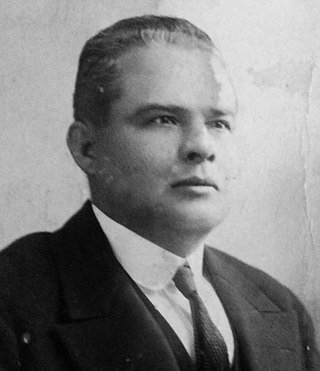
Baudilio Palma was acting President of Guatemala, in place of general Lázaro Chacón González, from 13 to 17 December 1930, when he was deposed and probably assassinated after coup d'état led by general Manuel María Orellana Contreras, who appointed himself as president. Several authors argue that he might not have been killed, but went into exile to El Salvador, where he would have died on 19 June 1944.

Jimmy Morales is a Guatemalan politician, actor, and comedian who served as the 50th president of Guatemala from 2016 to 2020.

Guatemala–Turkey relations are foreign relations between Guatemala and Turkey. Guatemala has an embassy in Ankara since April 19, 2017. Turkey has an embassy in Guatemala City since 2015.

The Cabinet of Otto Pérez Molina was the forty-eighth cabinet of Guatemala.

















